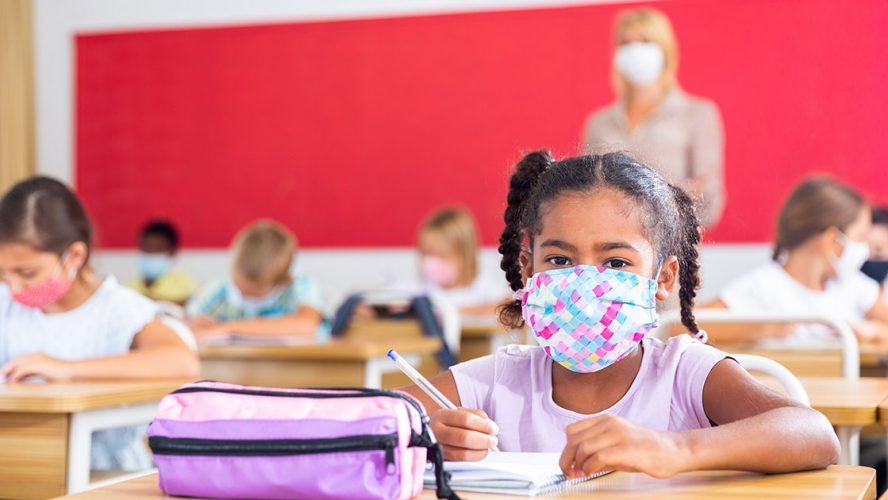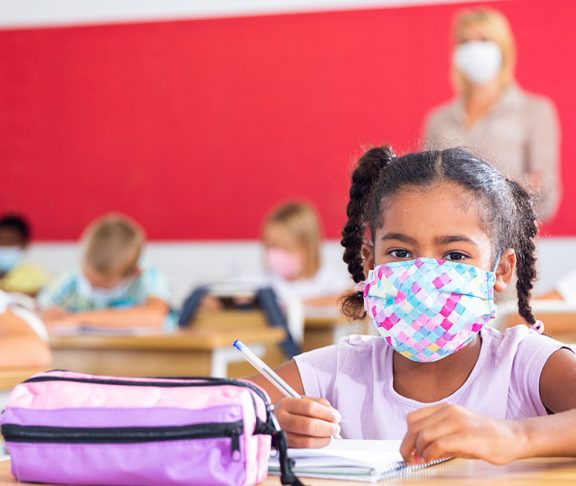Healthier indoor environments in K-12 schools can positively impact students and staff. Now, new funding is helping to make upgrades and enhancements possible.
The COVID-19 pandemic has presented a massive challenge to schools. As debates on reopening take center stage, educators, parents, and students are forced to weigh concerns over reductions in student learning gains, emotional effects and getting back to work with concerns of health and physical safety. According to research conducted by Carrier and Syracuse University, leveraging a layered defense strategy for a healthier, safer environment can reduce transmission of airborne pathogens by up to 80 percent and turn schools into powerful tools for student health and progress moving forward.
Now, $54 billion in new government funding is making improvements more attainable for schools across the country. Passed in late December 2020, the omnibus spending bill outlined the United States federal budget for 2021 and set aside billions for COVID-19-related stimulus efforts. More than $54 billion of the funding aims to address needs across a range of categories in K-12 schools, including updating HVAC systems and safety supplies.
The impact of healthier schools
By high school graduation, children and adolescents will have spent approximately 15,600 hours in school. The well-being of students is directly tied to the health of their learning environments. In fact, research shows that making school buildings healthier, especially with respect to ventilation and air quality, will yield resilient schools that are more prepared to support students in future outbreaks and improve overall student well-being and performance.
- For every hour increase in the air exchange rate in schools, there was a 12 percent decrease in sick days.
- Poorly ventilated classrooms showed a 5 percent decrease in “power of attention,” roughly equivalent to the impact that a student might feel if skipping breakfast.
- Students in classrooms that received portable mechanical ventilation system interventions performed faster and more accurately on computerized tasks.
With an understanding of the impact that healthier indoor environments can have on students and staff, the next question facing schools is how to make these environments possible. The reality is, there’s no single strategy for creating safer and healthier environments. Instead, a layered defense strategy should be implemented, where multiple interventions including behavioral changes and engineering systems must be implemented simultaneously.
Actionable strategies
Healthy buildings experts at Carrier have identified several actionable strategies that schools can take related to engineering systems. These cover areas including ventilation, filtration controls and touchless solutions.
- Six air changes per hour in classrooms is an ideal goal, while five is still a meaningful improvement above current ventilation rates in most classrooms.
- Buildings should eliminate or reduce air recirculation — improving the intake of fresh outdoor air — to the greatest extent possible.
- In buildings with mechanical ventilation systems, existing filters can be upgraded to filters with efficiency ratings of at least MERV 13 or the highest MERV rating the system can handle.
- Portable air cleaners with high-efficiency particulate air (HEPA) filters may be useful to reduce exposures to airborne particles.
- Schools can also focus on enhancing ventilation and filtration through a process of commissioning and testing.
- No-contact infrastructure is an engineering control method used to reduce the indirect spread of pathogens from fomites. This includes technologies such as automatic dispensers of hand soap/hand sanitizer/paper towels.
These are just a few examples of strategies that can help schools improve indoor air quality (IAQ) and overall building health. For additional strategies, guidance on how to take advantage of new funding and free assessments to get started, schools can turn to Carrier and its Healthy Buildings Program.
Through an industry-leading suite of advanced solutions and services, Carrier’s Healthy Buildings Program helps deliver healthy, safe, efficient and productive indoor environments at a time they’re needed most. The program draws from technologies designed to help improve IAQ by increasing outside air, improving temperature and humidity levels, managing occupancy density, optimizing energy efficiency, and enabling touchless interactions.
The future of schools
From a safe reopening to ongoing enhancements to student performance, a healthier future starts indoors. See how Carrier can work with you to unlock the enormous potential of healthy schools and access $54 billion in federal funding to ensure safer operation in the short term and enhance student health and performance for generations to come.
Connect with your local Carrier expert or visit carrier.com/K-12 to learn more.


